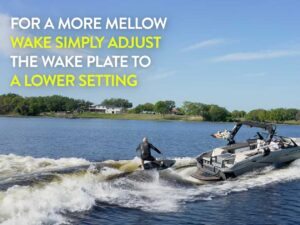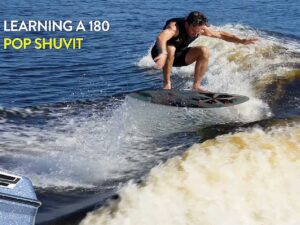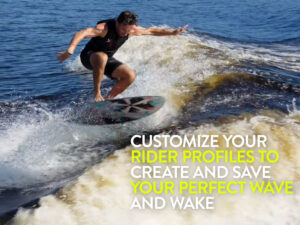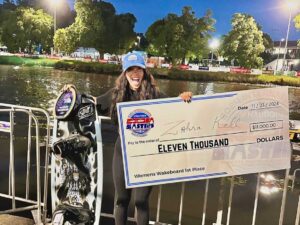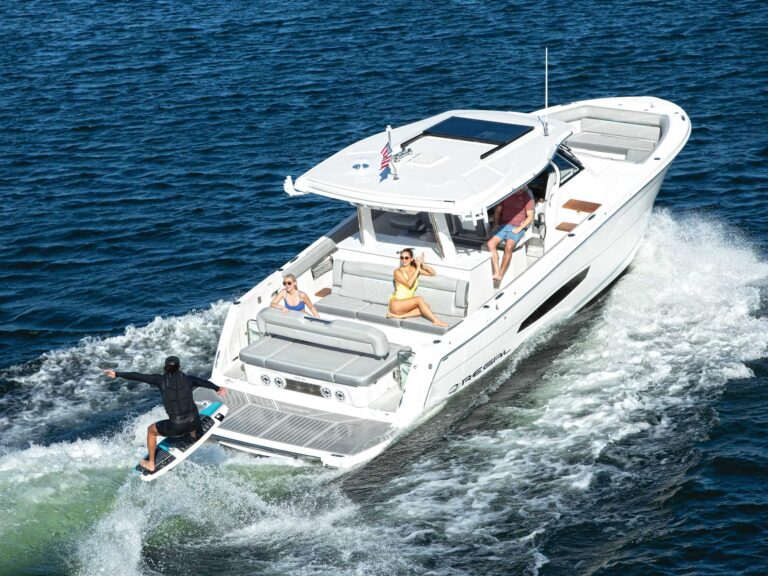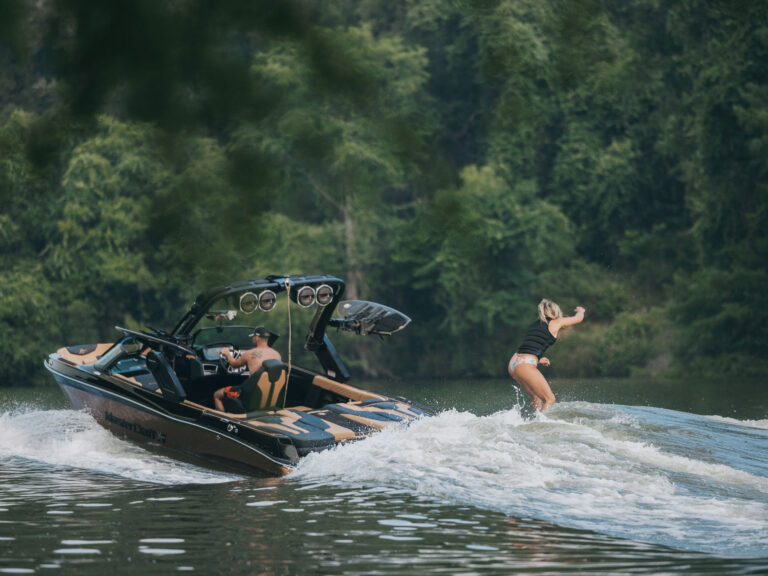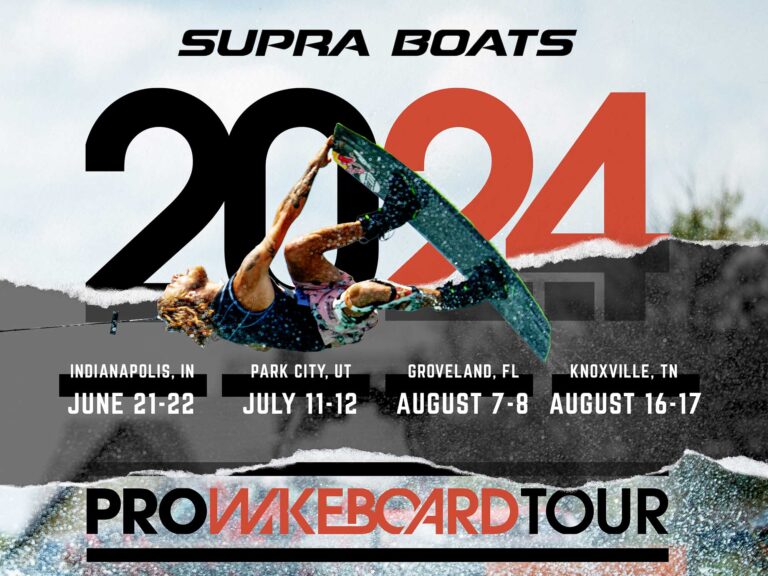The APL Norway is a 968-foot-long container cargo ship with a hull that cuts more than 45 feet below the surface as it powers through the shipping channels of the world, transporting goods from port to port in major coastal cities across the farthest reaches of the globe. As boaters, we’re probably only marginally aware of the logistics of international trade, but we’re quite familiar with the effect of a boat’s hull displacing water as it moves at speed. Many specifically chose their own boat for its ability to kick up a good wake, so it almost seems overdue that a handful of us wake-stoked individuals had the wild idea to trailer a pair of SeaDoos out to southern Texas to ride the industrial-size wakes of the cargo ships and oil tankers coming in and out of the famed shipping ports of Galveston Bay.
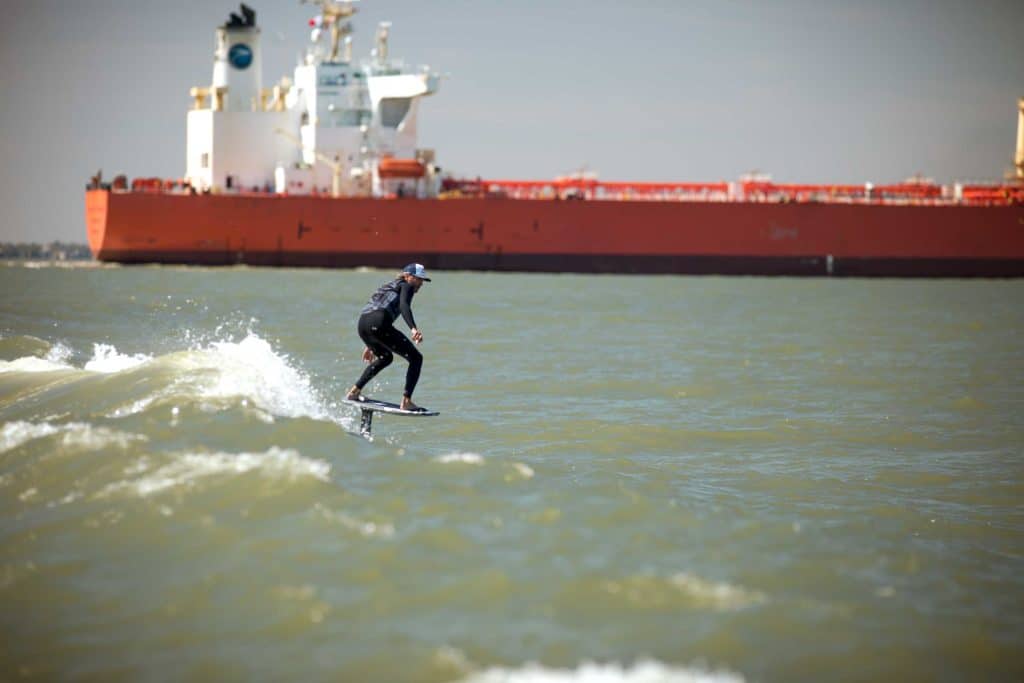
Upon meeting our local contacts, Capt. Joe and his brother, Doug, at the boat ramp, there was hardly a minute to spare for introductions before jumping straight into action. The first container ship of the day was ahead of schedule and steaming past our dropping-in point. I hopped on my SeaDoo Wake, joined by legendary board-rider Brian Grubb, with a tow-in surfing sled attached to the back, while our image-capturing team of photographer Bryan “Golden Bear” Soderlind, videographer Erik Ruck and drone operator Parks Bonifay, along with ripper Shawn Watson, loaded up with their equipment aboard Capt. Joe’s boat, Stars and Stripes—a sturdy 24-foot twin-hull fishing boat, decked with dual 140 hp outboard engines and a prominent bald eagle decal on each side of the bow. Our small convoy departed the boat ramp ready for anything. We followed Stars and Stripes, behind our first cargo ship, out into open water.
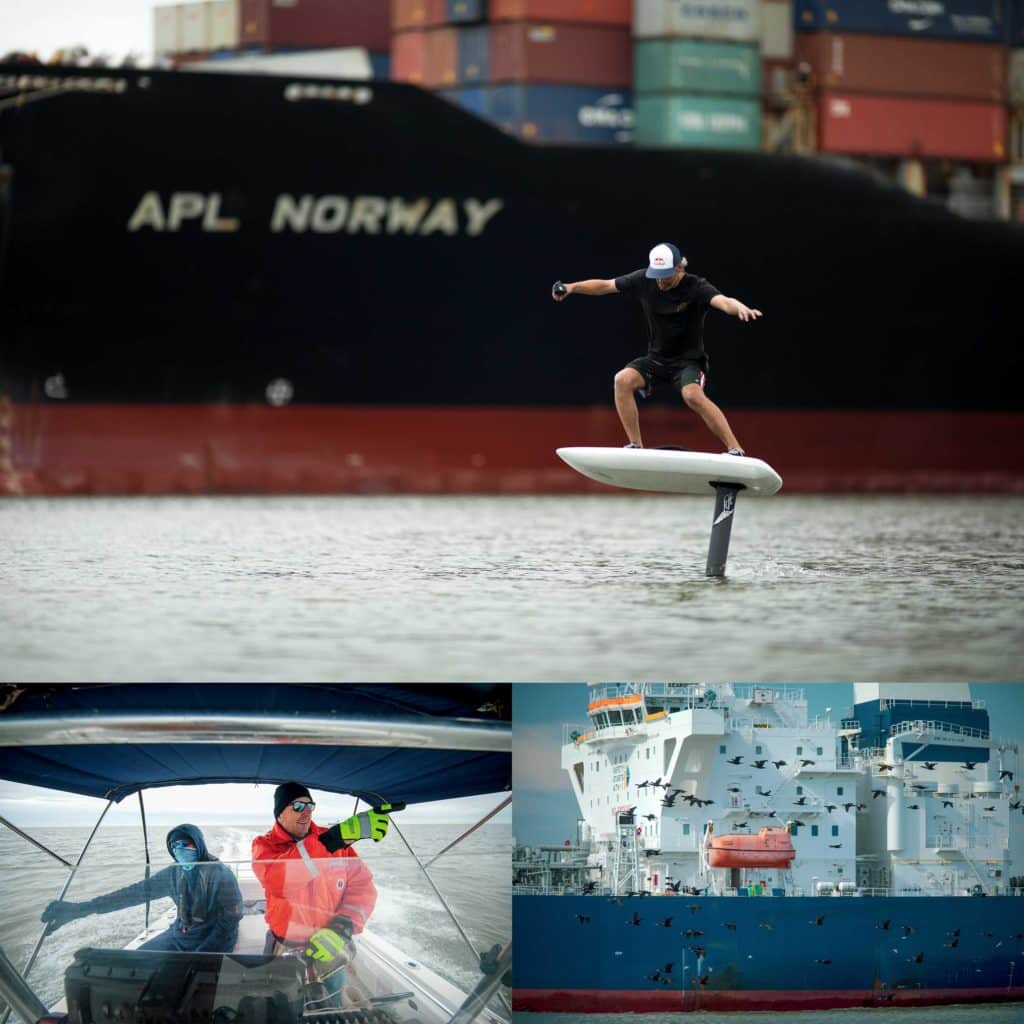
The icy sting of sea spray coming over the bow on a cold February morning had a sharper effect on the mind than any cup of coffee ever has, while the relentlessly windy conditions only furthered the effect, until our hands and faces went numb as we followed the tanker along a seemingly indistinct tract of waterway. The cruel morning temperatures, the unseen wake of the ship and the lack of visible shoreline ahead gave us each a reason to silently question the life choices that had brought us here, but we trusted our captain to guide us to the treasure we had come so far to seek. We took refuge near the stern of the enormous cargo ship, where the fierce wind chop became slicked over by consistent upwellings that resulted in a smoother ride, but were also themselves not entirely benign. Without careful navigation, the shifting force vectors of the ship’s wash could have easily taken down a full-size wakeboat, so we avoided the middle.
Finding ourselves in such immediate proximity to the overbearing might of the 1,066-foot-long MSC Toronto, I was in true awe. Almost 200 feet longer than the Titanic, this massive cargo ship was neither adorned for luxury nor decorated to imply status, but outfitted purely to be useful and practical—a colossal means to an end, of a scale that seemed more suited to a Star Wars movie than to anything as trivial as Earth-bound commodity transportation.
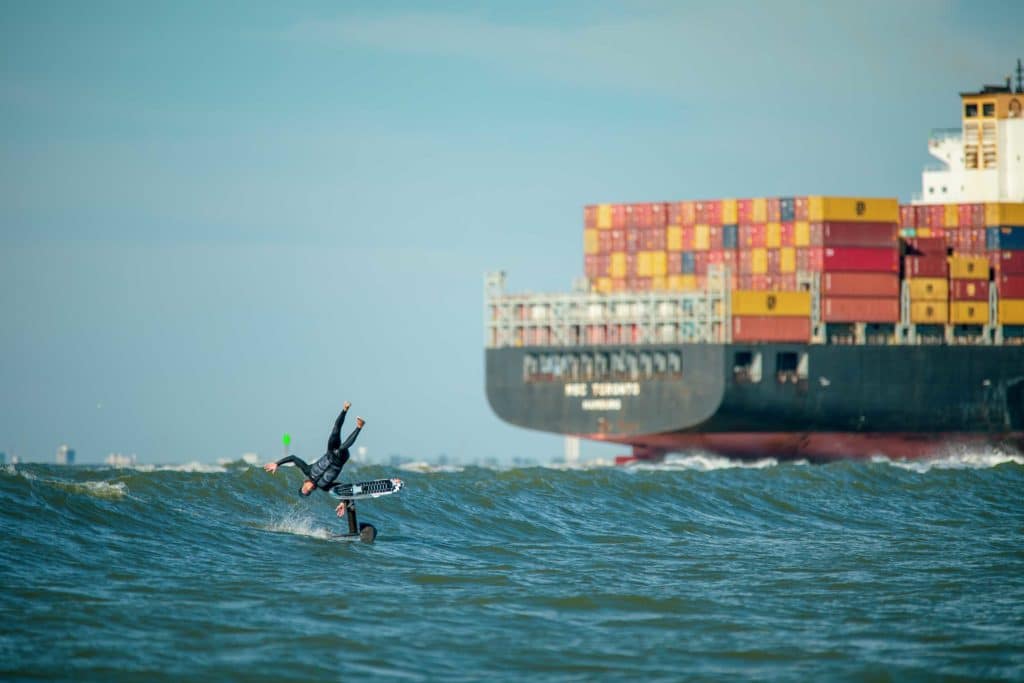
Without warning, Capt. Joe broke off from our shared trailing position, increased speed and began overtaking the cargo ship, motioning for us to follow him forward and outward. He informed us that we had arrived at the beginning of a long sandbar that runs shallow for a few miles along the deep shipping channel in which the container ship would continue plowing toward port. Grubb jumped into the water with his hydrofoil board while I hooked up his rope and handle, preparing to tow him along the face of the cargo ship’s wake until it was pronounced enough for him to surf it unaided.
Knowing that these wakes tend to be strong and long-lasting yet lacking in steepness and pitch, the hydrofoil was our weapon of choice. The physics of the airplane-shaped wing, which take normal board drag out of the equation, allow for even the smallest and flattest waves to be surfed at high speeds and maneuvered deftly without much effort. Capt. Joe’s sharp local knowledge soon became apparent; right on cue, the deep-rolling displacement wake of the cargo ship rose up from the abyss and began freight-training toward us as it stretched outward to the horizon. The endless wave was finally here. I accelerated the SeaDoo with Grubb in tow, chipped him in, then shot over to the side to enjoy my front-row view. Completely untethered, he glided masterfully along the face of the wave, the fluidity of his carves ethereal and his speed looking more hurricane-powered than man-made.
Grubb’s first ride lasted for almost 2 miles. Capt. Joe’s boat, with all of its cameras, stayed in front of the wave, while I circled back with the SeaDoo to pick up Grubb for another ride. By the time we’d traversed the residual waves back to the front again, Watson had thrown a dock line out from Stars and Stripes and whipped into the wave on his hydrofoil, as 90 seconds of watching the empty wave turned out to be too much for him, and he couldn’t resist any longer. The two wake legends rode the wave together, which ran for another mile before fading off back into deeper water.
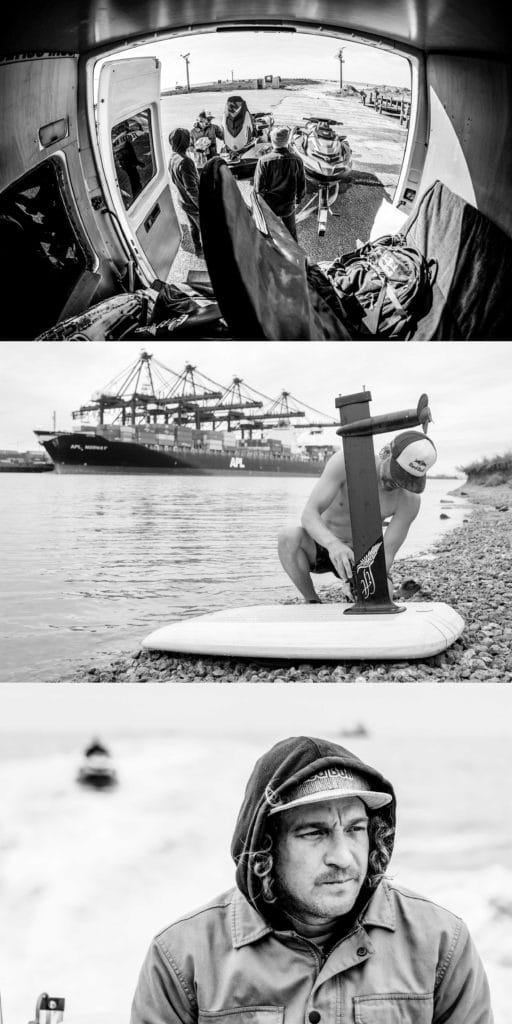
Basking in the glow of the first successful ride of our trip, we circled the wagons to share our stoke of watching them ride a man-made wave a mile wide and a few miles long without any beach or shoreline to be seen. Capt. Joe told us stories of surfing the oil-tanker wakes on these sandbars through the ’70s, ’80s, ’90s and 2000s while off-duty from his long career in Galveston Bay as a maritime pilot, the legally mandated captains who bring large seafaring vessels into harbor using local knowledge of the specific waterways under their authority. While piloting the world’s largest cargo ships and oil tankers coming in and out of port, Capt. Joe needed only to look off his starboard-side stern to witness the 3-to-6-foot-tall wakes rolling, cresting and breaking along the different shoals outside the channel, and make note of the best zones for surfing. We couldn’t have asked for a better guide. Consulting his insiders-only ship-tracking app, he gave us 20 minutes to reposition ourselves abeam a man-made breakwater island nearby for the next proper-size vessel scheduled to come through. Like a surfer using a swell-tracker app, Capt. Joe analyzed their ship logs for attributes like current speed, gross tonnage and total draft to determine where to catch the best waves throughout the day.
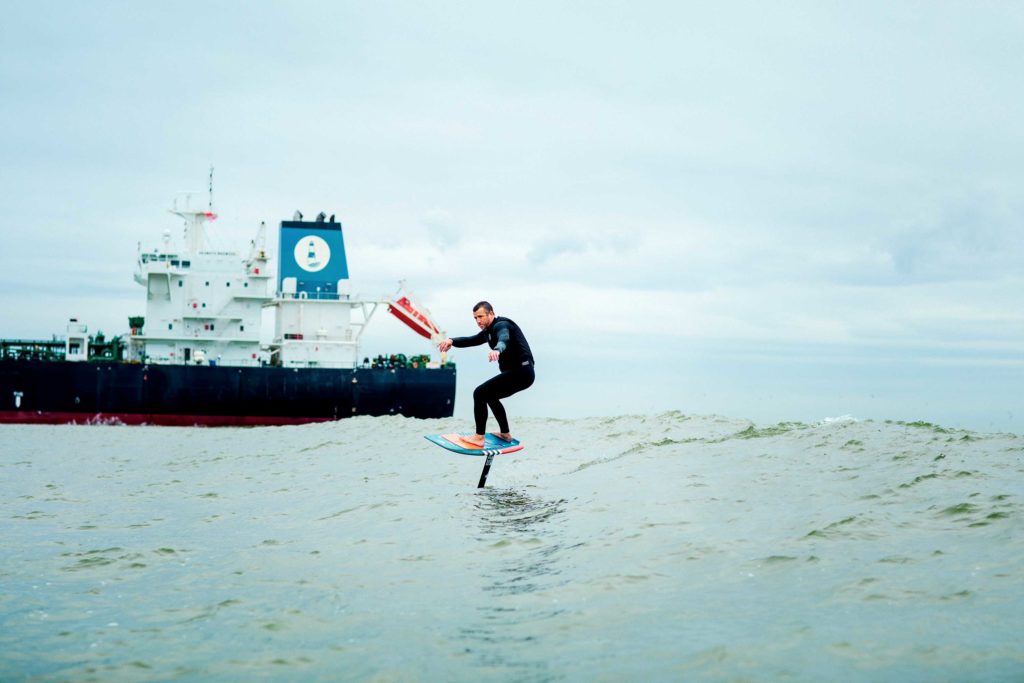
I caught a glimpse of a pod of dolphins right before I hopped off the SeaDoo for my first ride. They were playfully jumping out of the water, a few feet directly in front of the moving supertanker we were about to surf behind. The dolphins had apparently found a wave of their own, pushing off the bulbous bow on the front of the ship, and it occurred to me that our day more strongly resembled the dolphins’ than it did the hard-hat-wearing oil engineers turning wrenches and checking gauges on the deck of the ship above us. When I got to my feet and the lifting action of the foil engaged, I felt the dolphin’s joy running through my veins as the glide of my wing sliced effortlessly through the water. The wave wasn’t standing steep with its chest puffed out like an intimidating Hawaiian reef break; it had a more reserved power just under the surface: soft-spoken and steadfast. It didn’t crescendo, break and quickly disappear, but rather kept a steady unyielding push. Ropeless and free, the wide-open canvas invited big, wide carving arcs, trimming down the line at maximum speed, flying formation patterns with Grubb, buzzing the tower (flying past the camera boat as fast as possible) or simply riding straight, to look around and take in the whole scene, including the dolphins still playing on their side of the behemoth boat.
In the late afternoon, we sat on the back deck of our rented bay-view house, strumming guitars and watching the ships pass on the horizon, satisfactorily exhausted and stoked to do it again the next day. Dinner down the road painted a clear cross-section of the area. Equal parts beach town, oil country and classic Texas, Galveston carries a unique vibe that is very comfortable with itself. Eating my mahi tacos, I looked up to see the TV news channel talking about some kind of coronavirus outbreak going on in China and wondered what that was all about.
Our second morning came around with better conditions: warmer air and no wind. Grubb and Watson shared the first super-glassy wave of the day, surfing through a remarkably shallow area that broke more like a natural ocean wave but would then reform and continue pushing along at full power. I was inevitably reminded of another trip I had once taken with Bear shooting photos—a journey to Hangzhou, China, where the world’s largest tidal bore marches its way up the Qiantang River in a strikingly similar unrelenting fashion. I rode the Silver Dragon on my wakeskate and surfboard, but I now wish I’d had a hydrofoil board, so perfectly suited to the dynamic range and marathon rides found on these incredible tidal bores and tanker wakes.
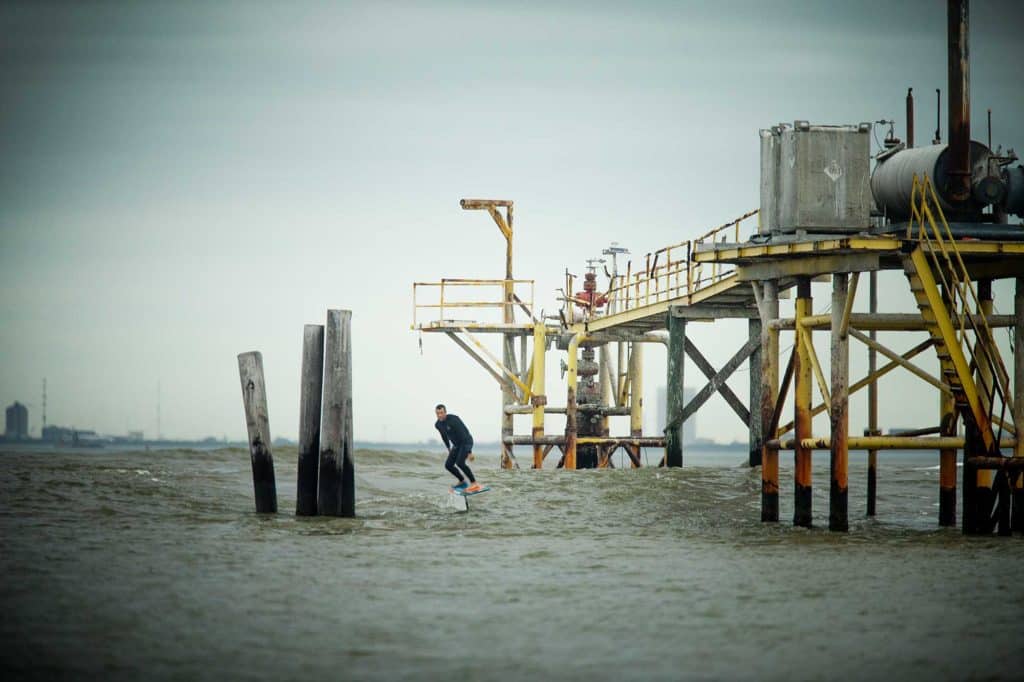
About a mile into our next ride, the wave carried Watson and me directly toward some kind of abandoned rigging station. Its scaffolding was just high enough and its components just far enough apart for Watson to take the inside track right through the middle of the structure, while I flanked left around the outside, watching him weave through the heavy industrial machinery stationed inside. We came out laughing with stoke and continued on down the line.
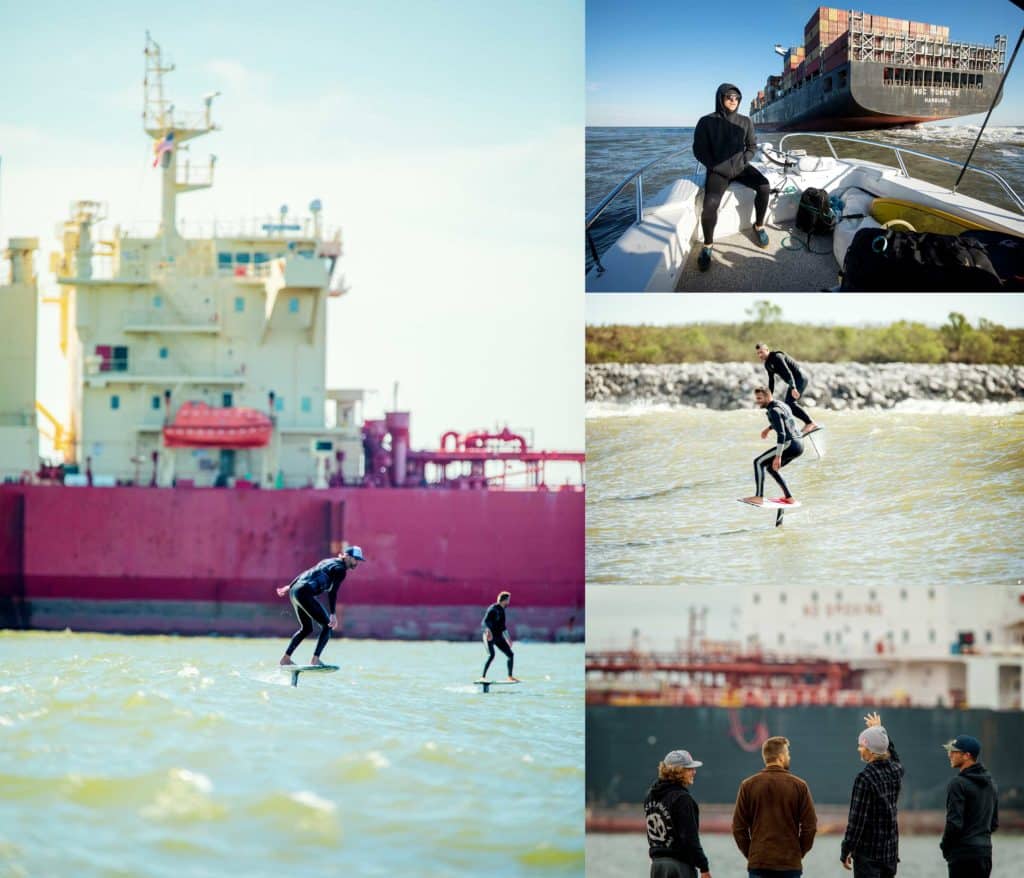
Capt. Joe’s indications showed the next ship, HandL Tubul, with its 8,000-plus shipping containers, holding very favorable speed on track with one of the longer rideable stretches in the whole bay. I grabbed the middle of the rope and Grubb grabbed the handle, and we swung in together, each of us riding the Lift Foils 170 Wing, a faster and more maneuverable setup to make the most of what would turn out to be the biggest and longest ride of the trip. The wave was taller than either of us, and standing steep enough that we could’ve paddled in. Gliding on our foil wings at over 20 mph, digging into fighter-jet turns around each other and racing down the line, we covered huge expanses of open water. Vocal stoke rang through the air, and the taste for speed did not subside. Minutes flew by and so did we. Eventually, whether because of the burn of envy I could see in Watson’s eyes or the burn of my completely spent legs, I called the SeaDoo over and stepped off my board around the 4-mile mark of that run, towing in Watson for a turn. The wave and the boys went for a little while longer, and when all was said and done, Grubb had gracefully surfed HandL Tubul for more than 5 consecutive miles, a serious feat of endurance and skill.
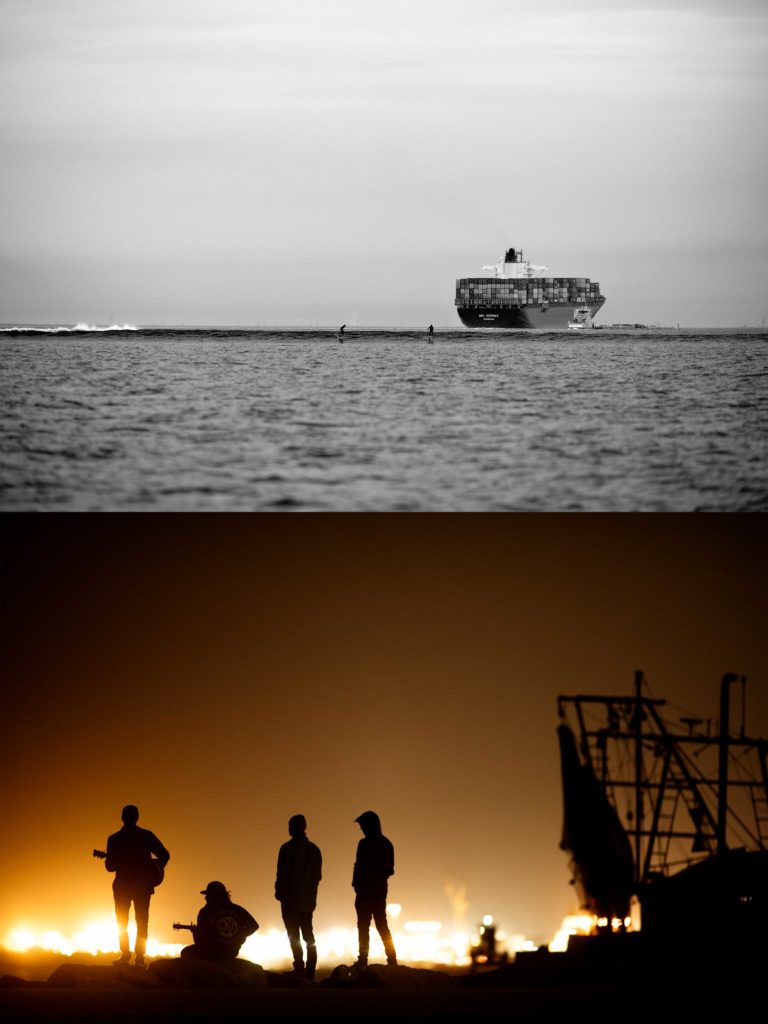
The prospects on the ship schedule dropped off significantly after that, so we thanked Capt. Joe and brother Doug for all of their help, pulled out the SeaDoo, and drove over to the main shipping port itself, where the cargo ships dock to get loaded and unloaded. From a nondescript entrance on the side of the narrow channel, we carried our Lift eFoils—self‑propelled electric hydrofoil boards—down to the water and went out for a picturesque flat-water shred session in the looming shadow of our old friend, APL Norway.
